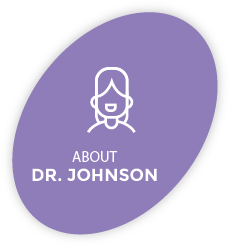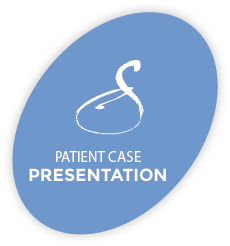Appliance Care & Use
Braces
Every day when you brush your teeth, check to make sure you do not have any loose braces by gently trying to slide each one. If a wire or band comes loose, do not be alarmed. If a tie wire is protruding and irritating, use a blunt instrument (the back of a spoon or a pencil eraser) to carefully push the wire out of the way. If you have a broken or loose appliance, please call us to determine if your breakage is urgent and requires immediate repair. If a piece comes loose, save it and bring it with you to the office.
Elastics
Elastics are essentially rubber bands that are attached to brackets, usually between the upper and lower or front and back teeth, applying tension and causing teeth to move. Elastics can be used in many ways depending upon the treatment goals.
Elastics move the teeth in a direction they could not be moved using braces alone. Your teeth and jaws may be tender during the first few days elastics are worn. This is normal, and the tenderness should begin to disappear within a week. If it persists longer, please call our office. Rinsing with hot salt water will help reduce the tenderness.
Your elastics may be difficult to put on at first, but this will become easier with practice. You may remove them only when eating or brushing your teeth. Leave them in during snacking. Be sure to replace the elastics with new ones immediately after meals and brushing. Part-time wear does NOT move teeth, but it does cause prolonged discomfort.
Change the elastics routinely even if they are not broken. After a while, elastics lose their strength. Change them after each meal and before bedtime. If one elastic breaks, replace both sides.
Carry extra elastics with you at all times. If you don't have enough to last until your next appointment, please stop by our office and pick more up or call us and we can send more to you. We don't want you to run out.
Before you leave the office, be absolutely sure you understand exactly where to hook the elastics. Hooking them on incorrectly can be worse than not wearing them at all, as your teeth might move in the opposite direction. If you ever have any questions on how to wear your elastics, please do not hesitate to ask.
Retainers
Retainers are made from wires, clasps and plastic and are constructed for the purpose of holding the teeth. They are placed after the appliances have been removed. A removable retainer consists of colored plastic that goes behind the teeth and a wire that goes along the front. At first, your retainers will feel bulky, and speech may be a problem. The retainer may cause a slight lisp, but don't be alarmed: speech usually returns to normal within a few days. The day after you receive your retainer, your teeth may be a bit sore. This won't last long. The tissue on the roof of your mouth may become a little tender. You should get used to this in two to three days. Since retainers are removable, you must be responsible to use and care for them properly. Strict attention to instructions is essential.
Your retainer should be worn at ALL times except when eating at home, brushing, participating in contact sports, or swimming in a lake (or ocean) where they could not be retrieved if lost. When your retainer is not in your mouth, it should be kept in the case. Do not put it on a table where it might get knocked off or in a pocket where it may be easily cracked. Keep it away from dogs, which like to chew on retainers if given the opportunity.
If you must remove your retainer, NEVER wrap it in a paper towel, napkin or tissue. This is the most common way of losing a retainer. ALWAYS put it in the plastic retainer case we give you and always keep it in a safe place.
Your retainer should be cleaned after each meal and before going to bed. Retainers can be cleaned with your regular toothbrush and toothpaste. You may use a denture brush and denture toothpaste if you wish. Fill the sink with cool water to cushion the fall in case you drop it. Do not use hot water; it will cause warpage. Clean the retainer gently, being careful not to bend the wires. Before placing the cleaned retainer in your mouth, be sure you thoroughly brush your teeth. If the retainer or teeth are not kept clean, an irritation of the gums may result, and this can be serious.
If plaque builds up on the retainer over time, it will dry and harden like tartar and be difficult to remove with a brush. Denture cleaners like Efferdent or Polident are effective in removing this tartar. Follow the directions on the package. Leave the retainer in the cleaner no longer than 10 minutes; you can do this once a week if needed. To economize, try lemon juice first to dissolve and loosen the tartar before brushing.
Retainers are made to withstand normal use, but they crack or break if handled roughly. Retainers also can break if they are stepped on, dropped or placed in pockets. If yours breaks, be sure to bring in the pieces to your appointment. If your retainer becomes cracked, DO NOT wear it. Call our office immediately.










